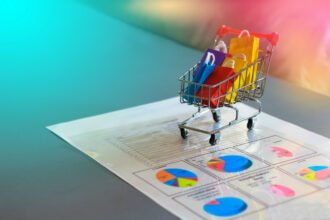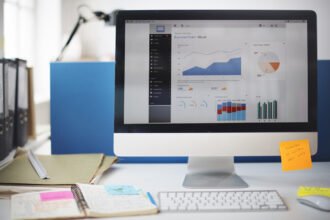In exploring the ways big data can improve your eCommerce business, what are some ways you’ve started to dive in?
Big Data has taken the world of eCommerce by storm. These days, it seems as though everyone is hopping on the trend of trying to get in-depth customer insights that can help their business grow. And with 51% of Americans preferring to shop online, it’s no wonder why everyone is trying to get an edge.
However, while it seems as though Big Data is here to stay, it’s not something everyone knows how to use. After all, you’re talking about taking a large chunk of information and categorizing it into segments that can be targeted and acted upon, which a lot of small businesses find overwhelming. Yet, with a little bit of knowledge, you too can be ahead of the curve in comparison to your competition. Here’s how:
Start By Assessing Your Model
In order to know what data points to use, you first have to determine what data you need to collect. This includes examining not just the trends for your store but the entire industry, and how your company is competing. For example, let’s say that I have an online t-shirt business that specializes in next day screen printing. While I know I personally see growth around the time when school gets back into session due to clubs, organizations, and teams ordering, when are the other peak times across the board? Why do these customers go to my competition over me?
To compare ourselves to others, we need to look at two things: what others are doing that you’re not, as well as what untapped customer segments might be overlooked across the board. So, going back to our t-shirt example, perhaps your competition has more retainer contracts because they offer custom design or have different sets of ink/printing processes. While affordability is obviously going to come into play, the data you collect and compare will be huge in trying to decipher where and when you need to expand your offerings.
Look At Where Your Market Lives
A significant part of using big data in your eCommerce site is being able to organize your customer segments into categories that are actionable. While attracting customers is almost always the goal for any small business, it can’t be done all at once. Instead, break up your targets into groups that you can quantifiably test with your marketing efforts. For example, if I sell cooking supplies, then I’d want to use big data to see my overall customer segments (I.E., generational groups), then dive deeper into specific subcategories, such as gender, location, social media behavior, their income, and so forth.
Knowing what/how to target segments is an aspect of big data that overwhelms a lot of folks. After all, we all understand that having too much information can be unnecessary, while not enough can’t paint an accurate picture. However, as you know your business better than anyone else, the best way to think about this is by asking the questions that have an action you can translate. For example, if you know your business has a healthy segment of 20-something males, then asking out of that group, who could you target further? Believe me, while this all might seem a little too much at the moment, things will make much more sense when you really start marketing.
Figure Out An Attack Plan
While you might now have an understanding of who your customers are, the next step is to figure out how to interact with them. This can include hosting events, providing content, and even implementing a solid social media strategy. If you haven’t already, I highly suggest looking into how to revamp your social media efforts, especially in using data-specific targeting of your industry. This includes searching through hashtags, tastemakers, and popular posts surrounding what you’re about and contributing to the conversation. And as noted by Waterford Tech, companies like Facebook store approximately 30+ Petabytes of user generated data, making it a virtual treasure trove of information.
As you start to brainstorm ways to approach your marketing with big data, remember to follow the same principles you have all along. While data can be great in reaching new customers, you must consider the voice, tone, and other branding elements that already exist to bring them in. Furthermore, a lot of marketers get too hyped on the numbers and forget that they’re dealing with people, which is going to make all the trouble you put into getting that information meaningless. However, like any marketing endeavor, it’s important to remember what problem your business is trying to solve in the first place, and how you can continue on that mission.











